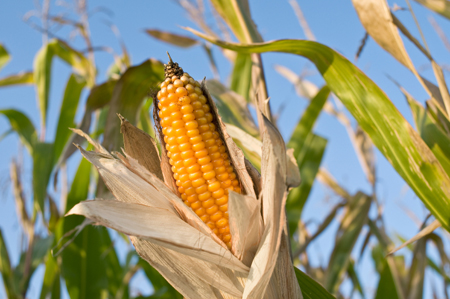 (Reuters) – U.S. soybeans fell to seven-month lows and corn to one-week lows on Wednesday, pressured by forecasts for nearly ideal growing conditions for the crops next week.
(Reuters) – U.S. soybeans fell to seven-month lows and corn to one-week lows on Wednesday, pressured by forecasts for nearly ideal growing conditions for the crops next week.
Temperatures were seen warming up by next week after a chill that supported prices earlier this week. Coupled with recent rainfall in the Midwestern crop belt, the extended outlook appeared beneficial to the crops, with farmers nearly finished with corn plantings and about halfway through soybean sowings.
Wheat futures were mostly higher, lifted by worries that excessive rains in the U.S. Plains could foster crop disease. Trading ranges in all three markets were narrow compared to grain and oilseed prices’ volatile swings during the last several sessions.
“We are going to struggle to rally, but the downside is severely limited,” said MaxYield Cooperative analyst Karl Setzer. “Next week, we’re looking at warmer temperatures and then, next thing you know, we’re sitting at perfect conditions.”
Heavy rainfall in southern U.S. Plains helped the region recover from a multiyear drought but also caused localized flooding in parts of Oklahoma and Texas. The wet pattern was likely to persist for about two weeks, the Commodity Weather Group said in a note to clients.
CBOT July wheat finished 2-3/4 cents higher at $5.13 per bushel, rebounding somewhat from steep losses on Tuesday.
Further weather worries could spark another round of short-covering by speculative investors who have a record-large net short, or bearish, combined position in wheat, corn and soybean futures, according to the U.S. Commodity Futures Trading Commission.
CBOT July soybeans were 5 cents lower at $9.41-1/4 per bushel, the lowest since Oct. 3. New-crop November soybeans fell as low as $9.15-1/4, setting a lifetime trough for the second straight session.
CBOT July corn was 2 cents lower at $3.60, a level Stefan Vogel, head of agriculture commodity research for Rabobank, characterized as fair.
“There is a little bit of a weather premium still right now, but if we have a yield of around 165 (bushels per acre), I think we have more than enough corn in the U.S.,” Vogel said.




